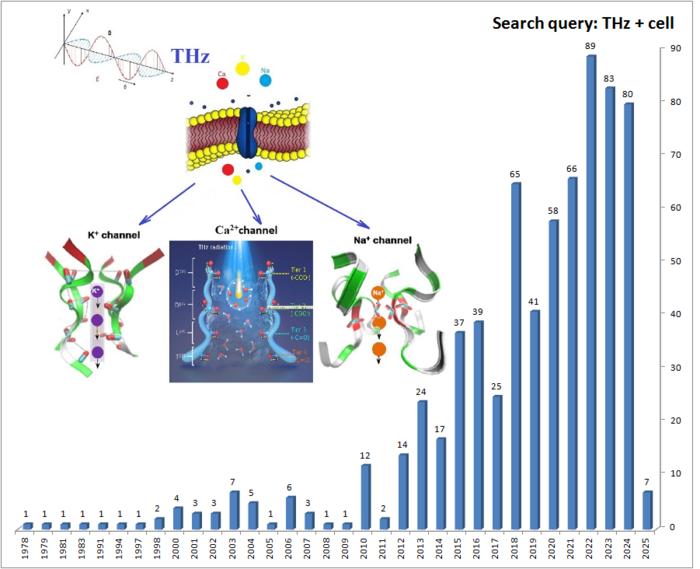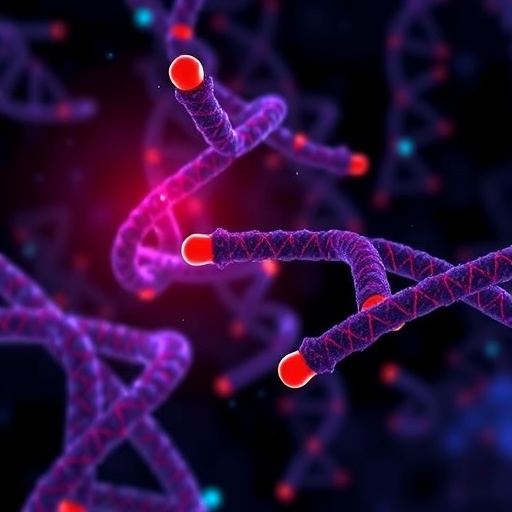
Since the inception of research into terahertz (THz) radiation, scientists have been captivated by its potential to transform various fields, including biology and medicine. Recently, a significant uptick in publications focusing on the interactions between THz radiation and living cells has been observed. This burgeoning interest, starting in 2020, has underscored the remarkable effects of THz radiation not only on cellular membranes and organelles but also on the intricate aqueous environments that sustain cellular life.
The unique energy levels associated with THz radiation allow for a mode of interaction that is both novel and impactful. Unlike conventional electromagnetic radiation, THz frequencies can induce subtle changes in cellular structures, making them a rich area of study for researchers interested in the molecular mechanics of life. Such interactions have the potential to redefine our understanding of cellular processes and provide new avenues for therapeutic interventions.
Research indicates that THz radiation can affect the ratio of bound to free water within cells. This alteration is crucial as it may serve as a mechanism through which THz radiation influences cellular metabolism. The vibrational and rotational movements of water molecules are paramount in determining cellular behavior. By shifting the frequency range to THz, researchers can manipulate these movements, leading to significant metabolic changes that could be harnessed for therapeutic purposes, especially in cancer treatment strategies.
However, the use of THz radiation is not without its concerns. There exists the potential for unintended consequences, particularly regarding gene expression mechanisms within cells. This aspect raises crucial questions about safety and the long-term effects of exposing living tissues to THz frequencies. Researchers emphasize the need for thorough investigations to ensure that therapeutic applications do not inadvertently lead to detrimental outcomes for patients.
Amidst the unfolding possibilities, notable researchers like A.P. Rytik and V.V. Tuchin have taken the lead in systematically reviewing the current literature on the subject. Their recent work, titled “Effect of terahertz radiation on cells and cellular structures,” offers a comprehensive analysis of existing studies, elucidating the effects of low-fluence THz radiation on cellular viability. This review sets a foundation for understanding how THz exposure can selectively alter cancer cells, thereby influencing future treatment paradigms.
An essential component of their study is the consideration of THz radiation’s safety profile in relation to human health. By critically evaluating how these radiation exposures affect biological systems, the authors advocate for a balanced approach that recognizes both the therapeutic potential and the inherent risks associated with THz exposure. The implication of this balanced perspective is that if applied judiciously, THz radiation could revolutionize methods used in oncological therapies.
The evolution of THz research reflects a wider trend in scientific inquiry: the intersection of physics, biology, and medicine. As scientists continue to bridge these disciplines, groundbreaking discoveries are likely to arise that not only bolster theoretical knowledge but also lead to practical applications. The insights gained from THz studies could provide transformative insights into cancer biology, ultimately leading to more targeted, efficient, and less invasive treatment options.
In addition to uncovering therapeutic potentials, researchers are also directed towards understanding the fundamental biological mechanisms modulated by THz radiation. By delving deeper into these interactions, the scientific community can discern specific cellular pathways affected by THz exposure, potentially leading to novel diagnostic and treatment applications in cancer therapy. This integrated approach may pave the way for innovative techniques that combine THz radiation with other therapeutic modalities to enhance treatment outcomes.
As the field progresses, collaborations among physicists, biologists, and medical professionals will be crucial. By leveraging expertise across these various domains, researchers aim to foster an environment conducive to innovation. This multi-faceted strategy will ultimately drive the development of advanced therapeutic techniques while ensuring patient safety is a paramount consideration.
In conclusion, the ongoing investigations into the effects of THz radiation reveal a promising frontier in biomedical research. The striking capabilities of THz radiation to influence cellular activity warrant further exploration, with the ultimate goal of enhancing clinical applications. As ongoing studies yield new insights, a clearer picture will emerge regarding THz radiation’s potential to transform cancer therapy and lead to better patient outcomes in the future.
Amidst the excitement, it is crucial to recognize the responsibility scientists have in ensuring that such powerful tools are used ethically and safely. Continuous dialogue and assessment of the risks involved will help navigate this remarkable landscape of potential, enabling researchers to explore the next frontier of medical treatments responsibly and effectively.
Subject of Research: Not applicable
Article Title: Effect of terahertz radiation on cells and cellular structures
News Publication Date: 27-Jan-2025
Web References: DOI link
References: Rytik, A.P., Tuchin, V.V. “Effect of terahertz radiation on cells and cellular structures.” Frontiers of Optoelectronics.
Image Credits: Rytik, A.P., Tuchin, V.V.
Keywords: Terahertz radiation, cell metabolism, cancer therapy, electromagnetic radiation, biological systems, cellular structures, oncological research.
Tags: advances in THz research 2020biophysics of terahertz radiationcellular metabolism and THz radiationeffects of THz radiation on organellesimpact of THz radiation on cellular membranesinnovative cancer therapies using THz wavesmolecular mechanics of THz interactionsterahertz radiation in cancer treatmenttherapeutic applications of THz frequenciesTHz radiation and cellular behaviorTHz waves and living cellswater molecule dynamics in cells





